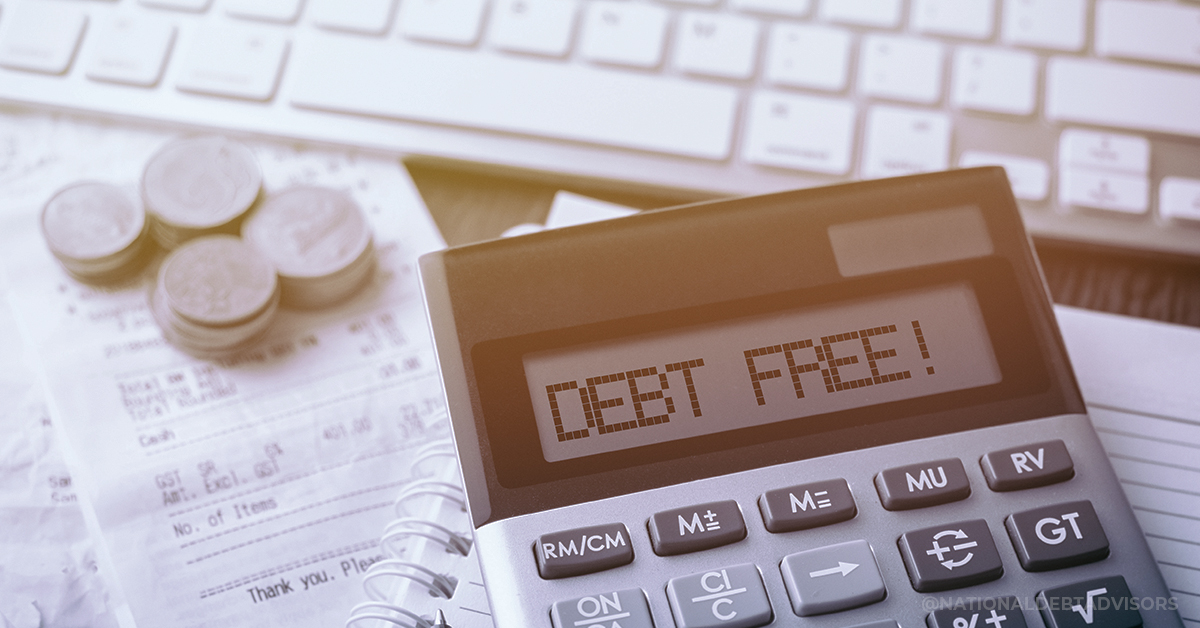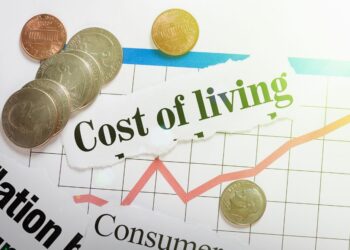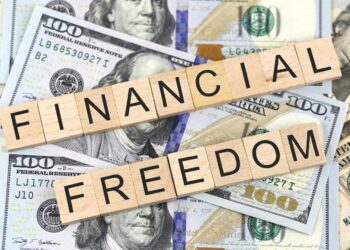Living a debt-free life isn’t just a dream; it’s an attainable reality that offers profound financial freedom and peace of mind. In an age where debt has become a pervasive aspect of modern life, mastering the art of eliminating it and staying free from its shackles is a crucial skill for financial well-being. This comprehensive guide will equip you with the knowledge, strategies, and mindset shifts necessary to conquer debt, from understanding its insidious nature to implementing practical hacks for a sustainably debt-free existence.
Understanding the Debt Landscape

Before embarking on your journey to debt freedom, it’s essential to understand the different types of debt, their implications, and why they can be so detrimental to your financial health. Not all debt is created equal, and recognizing the distinction between “good” debt and “bad” debt is the first step toward strategic elimination.
A. Differentiating Good Debt from Bad Debt
The concept of “good” debt versus “bad” debt is crucial. Good debt generally refers to borrowing that has the potential to increase your net worth or provide a future return. Examples often include:
A. Mortgage Debt: For most people, a mortgage is necessary to acquire a home, which typically appreciates in value over time and builds equity. The interest on a mortgage can also be tax-deductible in many regions.
B. Student Loan Debt: While often burdensome, student loans can be considered good debt if they enable you to acquire an education that leads to a higher earning potential and career advancement.
C. Business Loans: Debt taken to start or expand a profitable business can be considered good debt, as it’s an investment aimed at generating income.
On the other hand, bad debt is typically associated with depreciating assets or consumption, offering no long-term financial benefit. This is the debt you should prioritize eliminating. Common examples include:
A. Credit Card Debt: With notoriously high-interest rates, credit card debt is perhaps the most insidious form of bad debt. It can quickly spiral out of control, making it incredibly difficult to pay off the principal.
B. Personal Loans: While sometimes necessary for emergencies, personal loans often carry high interest rates and are used for consumption rather than investment.
C. Auto Loans: Unless the vehicle is a necessary tool for your business, an auto loan is generally considered bad debt because cars rapidly depreciate in value.
D. Payday Loans and Title Loans: These are predatory loans with exorbitant interest rates, designed to trap individuals in a cycle of debt. They should be avoided at all costs.
B. The Insidious Nature of Interest
Interest is the cost of borrowing money, and it’s what makes debt so challenging to overcome. Compound interest, while a powerful force for wealth accumulation when investing, becomes a devastating burden when you’re on the borrowing end. High-interest rates on credit cards, for example, mean that a significant portion of your minimum payment goes towards interest, leaving little to reduce the principal balance. Understanding how interest accrues will fuel your motivation to pay off debt faster.
C. The Psychological Burden of Debt
Beyond the financial strain, debt carries a heavy psychological burden. It can lead to stress, anxiety, depression, and even impact relationships. The constant worry about payments, the feeling of being trapped, and the limitations on your financial choices can significantly diminish your quality of life. Recognizing this emotional toll can serve as a powerful motivator to seek debt freedom.
Building Your Debt-Free Life
A successful debt elimination journey starts with a clear plan. Without a strategic blueprint, your efforts might be scattered and ineffective.
A. Assess Your Current Debt Situation
The first critical step is to get a complete picture of your debt. This involves:
A. Listing All Debts: Create a comprehensive list of every debt you owe. Include credit cards, personal loans, student loans, auto loans, mortgages, and any other outstanding balances.
B. Recording Key Details: For each debt, note down the following:
- Creditor Name: Who you owe the money to.
- Current Balance: The total amount you currently owe.
- Interest Rate (APR): The annual percentage rate. This is crucial for prioritization.
- Minimum Payment: The smallest amount you must pay each month.
- Due Date: When the payment is expected.
This detailed assessment will reveal the magnitude of your challenge and help you identify where to focus your efforts.
B. Create a Realistic Budget
A budget is your most powerful tool in the fight against debt. It helps you understand where your money is going and identify areas where you can cut back to free up more funds for debt repayment.
A. Track Your Income: Clearly list all sources of income (salary, freelance work, etc.).
B. Categorize Expenses: Divide your spending into fixed expenses (rent/mortgage, insurance, loan payments) and variable expenses (groceries, entertainment, dining out). Use budgeting apps or spreadsheets to track every dollar.
C. Identify Areas for Cutting: Once you see your spending patterns, you can pinpoint non-essential expenses that can be reduced or eliminated. This might involve cutting down on subscriptions, eating out less, or finding cheaper alternatives for entertainment.
D. Allocate Funds for Debt Repayment: The primary goal of your budget, once debt is assessed, is to intentionally allocate as much money as possible towards debt repayment beyond minimums.
C. Choose Your Debt Repayment Strategy
There are two popular and highly effective strategies for paying off debt. The best one for you depends on your financial personality and the specific debts you have.
A. The Debt Snowball Method: This method focuses on psychological wins.
- List your debts from the smallest balance to the largest, regardless of the interest rate.
- Pay the minimum payment on all debts except the smallest one.
- Throw every extra dollar you have at the smallest debt until it’s paid off.
- Once the smallest debt is gone, take the money you were paying on it (its minimum payment plus the extra amount) and apply it to the next smallest debt.
- Continue this “snowballing” effect until all debts are eliminated.The debt snowball provides quick wins and builds momentum, which can be highly motivating.
B. The Debt Avalanche Method: This method focuses on mathematical efficiency.
- List your debts from the highest interest rate to the lowest, regardless of the balance.
- Pay the minimum payment on all debts except the one with the highest interest rate.
- Direct all extra funds towards the debt with the highest interest rate until it’s paid off.
- Once the highest interest debt is gone, take the money you were paying on it and apply it to the next highest interest rate debt.The debt avalanche saves you the most money in interest payments over time. If you’re disciplined and motivated by financial optimization, this is the superior method.
Powerful Hacks for Accelerating Debt Payoff

Once your plan is in place, it’s time to implement aggressive strategies to speed up your debt repayment journey. These “hacks” go beyond basic budgeting.
A. Increase Your Income
The simplest way to pay off debt faster is to have more money. Explore avenues to boost your income:
A. Side Hustles: Start a freelance gig, drive for a ride-sharing service, deliver food, offer your skills (writing, graphic design, tutoring), or sell crafts online. Every extra dollar earned can be directly applied to your debt.
B. Overtime at Work: If your job offers overtime, seize the opportunity. The extra hours can provide a quick influx of cash for debt repayment.
C. Sell Unused Items: Declutter your home and sell items you no longer need or use on platforms like online marketplaces. The proceeds can make a surprising dent in your debt.
D. Ask for a Raise: If you’ve been a high-performing employee, prepare a case for a raise. A permanent increase in income significantly impacts your ability to pay down debt.
E. Negotiate Bills: Call your service providers (internet, cable, insurance) and negotiate for lower rates. Many companies are willing to offer discounts or better packages to retain customers.
B. Slash Expenses Ruthlessly
Beyond the obvious cuts, dig deep to find areas where you can drastically reduce spending, even temporarily.
A. The No-Spend Challenge: Try a “no-spend” week or month where you only buy absolute necessities (food, shelter, transportation). This can reveal how much discretionary spending you typically have.
B. Meal Planning and Cooking at Home: Eating out is a major budget killer. Plan your meals, buy groceries in bulk (if practical), and cook at home. Packing lunches and making your own coffee can save hundreds monthly.
C. Temporary Sacrifices: Consider pausing or canceling subscriptions, cutting back on expensive hobbies, or opting for free entertainment (parks, libraries) instead of costly outings. Remember, these are temporary sacrifices for a greater long-term gain.
D. Optimize Transportation: Carpool, use public transport, bike, or walk more often. Even small changes in commuting habits can save on gas, tolls, and maintenance.
E. Lower Utility Bills: Be mindful of energy consumption. Unplug electronics, turn off lights, adjust your thermostat, and take shorter showers.
C. Leverage Windfalls and Bonuses
Any unexpected money that comes your way should be directed straight to your debt. This includes:
A. Tax Refunds: Instead of treating it as a bonus to spend, use your tax refund to make a significant lump-sum payment on your highest-interest debt.
B. Work Bonuses: If you receive a performance bonus, resist the urge to splurge and allocate a substantial portion to debt.
C. Gifts and Inheritances: While exciting, consider using these funds to accelerate your debt freedom.
D. Debt Consolidation and Refinancing
While paying down debt, explore options that could lower your interest rates or simplify your payments. However, approach these with extreme caution and a clear understanding of the terms.
A. Balance Transfer Credit Cards: If you have excellent credit, you might qualify for a balance transfer card with a 0% introductory APR. This gives you a period (e.g., 12-18 months) to pay down your balance interest-free. Crucially, you must pay off the balance before the promotional period ends, or the high interest rates will kick in. Be aware of balance transfer fees.
B. Personal Loans for Debt Consolidation: A personal loan with a lower interest rate can consolidate multiple high-interest debts into one simpler payment. This can be beneficial if the new loan’s interest rate is significantly lower than your existing debts. Ensure you don’t take on new debt once you consolidate.
C. Refinancing Mortgages or Auto Loans: If interest rates have dropped or your credit score has improved, refinancing might lower your monthly payments or the total interest paid over the life of the loan. However, consider closing costs and whether extending the loan term negates the interest savings.
Crucial Caveat: Debt consolidation or refinancing is only a “hack” if you stop accumulating new debt. If you consolidate and then run up your credit cards again, you’ll be in a worse position.
E. Negotiate with Creditors
Don’t be afraid to reach out to your creditors, especially if you’re struggling to make payments.
A. Lower Interest Rates: Call your credit card companies and ask if they can lower your interest rate. Highlight your good payment history (if applicable) or explain your commitment to paying off the debt.
B. Payment Plans: If you’re facing hardship, some creditors may be willing to work with you on a more manageable payment plan or temporarily defer payments.
C. Hardship Programs: For student loans, explore income-driven repayment plans or deferment/forbearance options during periods of financial difficulty.
The Mindset Shift
Paying off debt is only half the battle. Maintaining a debt-free lifestyle requires a fundamental shift in your financial mindset and ongoing vigilance.
A. Embrace Frugality as a Lifestyle
Once debt-free, many people revert to old spending habits. Instead, cultivate a mindset where frugality is a natural part of your life, not a temporary deprivation. This doesn’t mean living miserably; it means making conscious choices to spend less on wants and prioritize experiences or investments that align with your values.
B. Build a Robust Emergency Fund
Before you start investing heavily, establish a strong emergency fund. This is crucial for staying debt-free. With 3-6 months (or even more) of living expenses saved in an easily accessible, high-yield savings account, you won’t need to resort to credit cards or loans when unexpected expenses arise. This fund acts as your financial fortress.
C. Live Below Your Means
This is the cornerstone of sustainable financial health. Living below your means simply means spending less than you earn. When you become debt-free, continue this practice. The surplus income can then be directed towards savings, investments, and building wealth, rather than accumulating new debt.
D. Delay Gratification
The ability to delay gratification is a powerful trait for financial success. Instead of buying something immediately, ask yourself if you truly need it. Can you save up for it instead of putting it on credit? Often, waiting a few days or weeks diminishes the desire for impulsive purchases.
E. Avoid Lifestyle Creep
As your income increases, resist the urge to immediately upgrade your lifestyle commensurately. This phenomenon, known as lifestyle creep or lifestyle inflation, can prevent you from saving and investing more, even with a higher salary. Instead, when you get a raise, direct a significant portion of that extra income towards your financial goals (e.g., increased retirement contributions, investing) before adjusting your spending habits.
F. Set New Financial Goals
Once you’re debt-free, the money you were allocating to debt repayment can now be redirected towards building wealth. Set new, exciting financial goals:
A. Saving for a Down Payment: If homeownership is a goal, start aggressively saving for a down payment.
B. Maxing Out Retirement Accounts: Contribute the maximum allowed to your 401(k), IRA, or other tax-advantaged retirement accounts.
C. Building an Investment Portfolio: Start investing in diversified funds or individual stocks to grow your wealth for the long term.
D. Saving for Education: Whether for your children or your own continued learning, dedicate funds to educational pursuits.
E. Dream Vacation Fund: Saving for a dream experience can be a powerful motivator.
Having clear, aspirational goals will give your money purpose and keep you on track.
G. Educate Yourself Continuously
The financial landscape is always evolving. Continue to learn about personal finance, investing, economic trends, and new strategies. Read books, follow reputable financial blogs, listen to podcasts, and attend webinars. The more you know, the better equipped you’ll be to make smart financial decisions and protect your debt-free status.
Conclusion
Achieving debt-free living is one of the most empowering financial accomplishments. It liberates you from the cycle of payments, the burden of high interest, and the psychological weight of owing others. While the journey may demand discipline and sacrifice, the rewards are immeasurable: increased financial flexibility, reduced stress, the ability to build wealth more rapidly, and ultimately, true financial independence. By implementing these hacks, adopting a frugal mindset, and consistently prioritizing your financial well-being, you can not only conquer debt but also build a secure and prosperous future. Start today, take consistent action, and embrace the unparalleled freedom that comes with a life unburdened by debt.












